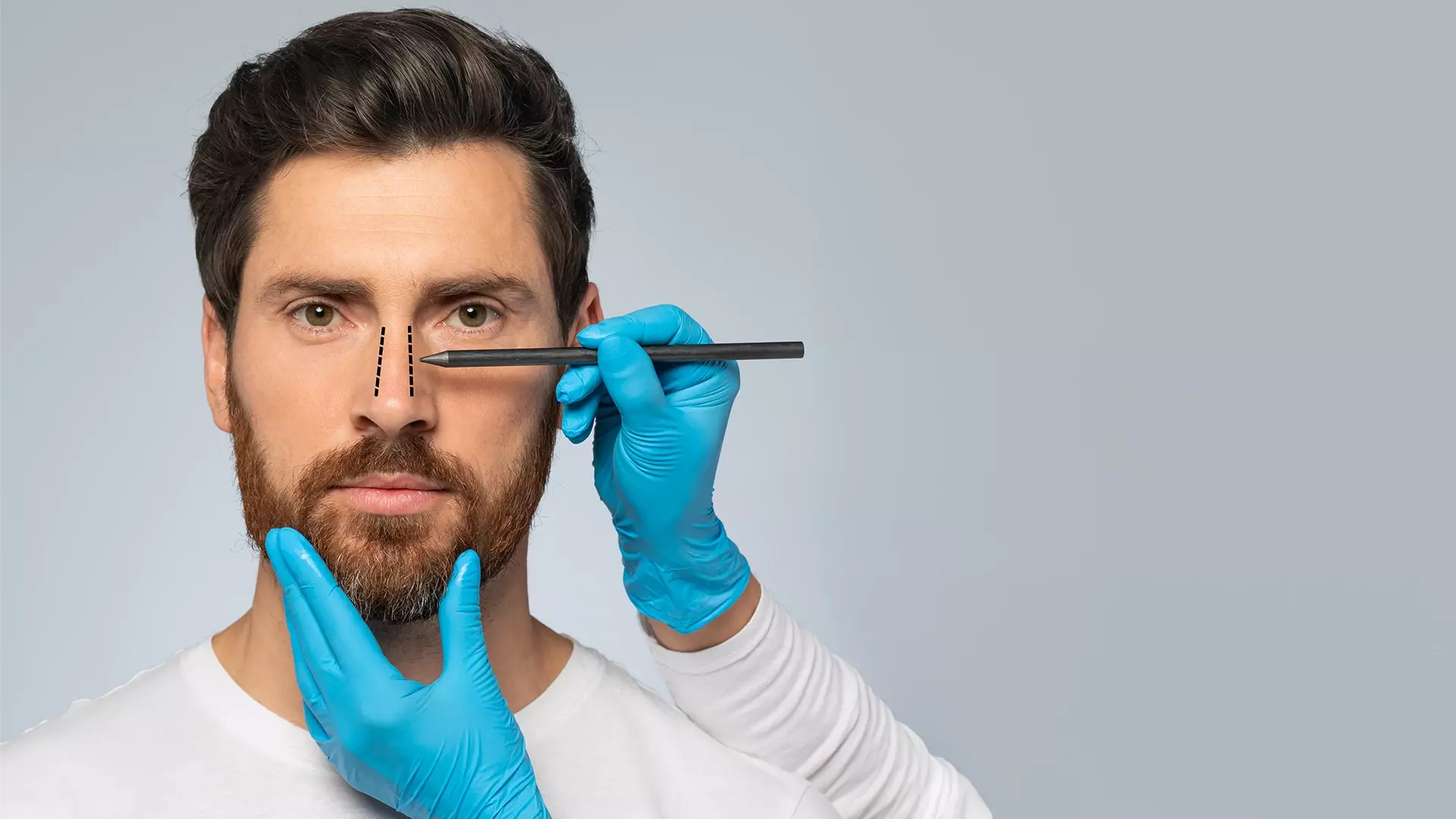Rhinoplasty (Nose Job) in Turkey 2024: All You Need to Know About Rhinoplasty at Dr. Pilus
Rhinoplasty, commonly referred to as a "nose job," is a popular cosmetic surgery procedure that can alter the size, shape, and structure of the nose. If you are considering getting a rhinoplasty in Turkey, you have made a great choice. Turkey has become one of the most sought-after destinations for rhinoplasty due to the high-quality treatment, experienced surgeons, advanced technology, and affordable cost.
At Dr. Pilus, we offer all-inclusive packages for rhinoplasty that include pre-operative consultations, surgery, aftercare, and follow-up appointments. Our experienced surgeons use the latest techniques and advanced technology to provide you with the best results. We understand that each patient has unique needs and preferences, which is why we offer personalized treatment plans tailored to your specific requirements.

What is Rhinoplasty?
Rhinoplasty is a surgical procedure that aims to reshape the nose by altering its size, shape, and structure. This procedure can address various issues, including a crooked or hump nose, a bulbous or wide nose, a drooping or upturned tip, or a deviated septum. Rhinoplasty can also improve the overall facial symmetry and balance by enhancing the nose's proportion to the rest of the face.
Why is it popular in Turkey?
Rhinoplasty has become increasingly popular in Turkey due to the high-quality treatment, experienced surgeons, advanced technology, and affordable cost. Turkey has established itself as a hub for medical tourism, attracting patients from all over the world who are seeking affordable and high-quality cosmetic surgeries. The country's strategic location, modern facilities, and skilled surgeons make it an ideal destination for rhinoplasty.
The Advantages of Rhinoplasty in Turkey
There are several advantages of getting rhinoplasty in Turkey, including:
High Quality of Treatment:
Turkey has state-of-the-art facilities that offer world-class treatment for rhinoplasty. The hospitals and clinics are equipped with the latest technology and equipment to provide patients with the best care possible.
Experienced Surgeons:
Turkey is home to some of the most experienced and skilled plastic surgeons in the world. Our surgeons have extensive training and expertise in performing rhinoplasty and can provide you with the best possible results.
Advanced Technology:
Turkey uses the latest technology in rhinoplasty, including 3D imaging, computer-assisted surgery, and ultrasonic rhinoplasty. These advanced techniques help to minimize scarring, reduce recovery time, and provide more precise results.
Affordable Cost:
Rhinoplasty in Turkey is much more affordable than in many other countries, without compromising on quality. Our all-inclusive packages cover all costs associated with the surgery, including accommodation, transfers, and aftercare.
All-Inclusive Packages:
At Dr. Pilus, we offer all-inclusive packages that make getting rhinoplasty in Turkey hassle-free. Our packages cover everything from pre-operative consultations to post-operative care, ensuring that you receive comprehensive treatment from start to finish.
If you are considering getting a rhinoplasty in Turkey, we encourage you to schedule a consultation with our experienced surgeons at Dr. Pilus. We will work with you to develop a personalized treatment plan that meets your unique needs and helps you achieve your desired results.
Don't forget, visitors can make an appointment with us by contacting us through our website or by phone. We are here to answer any questions you may have and provide you with the best possible care.
Dr Pilus: Best Rhinoplasty Center in Turkey
At Dr Pilus, we are proud to be recognized as one of the best rhinoplasty centers in Turkey. Our team of highly qualified and experienced surgeons, along with our state-of-the-art facilities and advanced technology, allow us to provide the highest quality of treatment to our patients.
Qualifications and credentials
Our team of rhinoplasty surgeons at Dr Pilus are all highly qualified and have undergone extensive training and education in their field. They hold certifications and credentials from reputable medical institutions both in Turkey and abroad, ensuring that our patients receive the best care possible.
Experience and expertise
Our surgeons at Dr Pilus have years of experience in performing rhinoplasty surgeries. They have successfully treated patients with different nose shapes and sizes, and are experts in achieving natural-looking results that complement each patient's unique features.
Before and after photos
We understand that seeing the results of previous patients is important in choosing the right rhinoplasty surgeon. That's why we provide before and after photos of our patients on our website and during consultations. These photos showcase our surgeons' expertise and the quality of their work.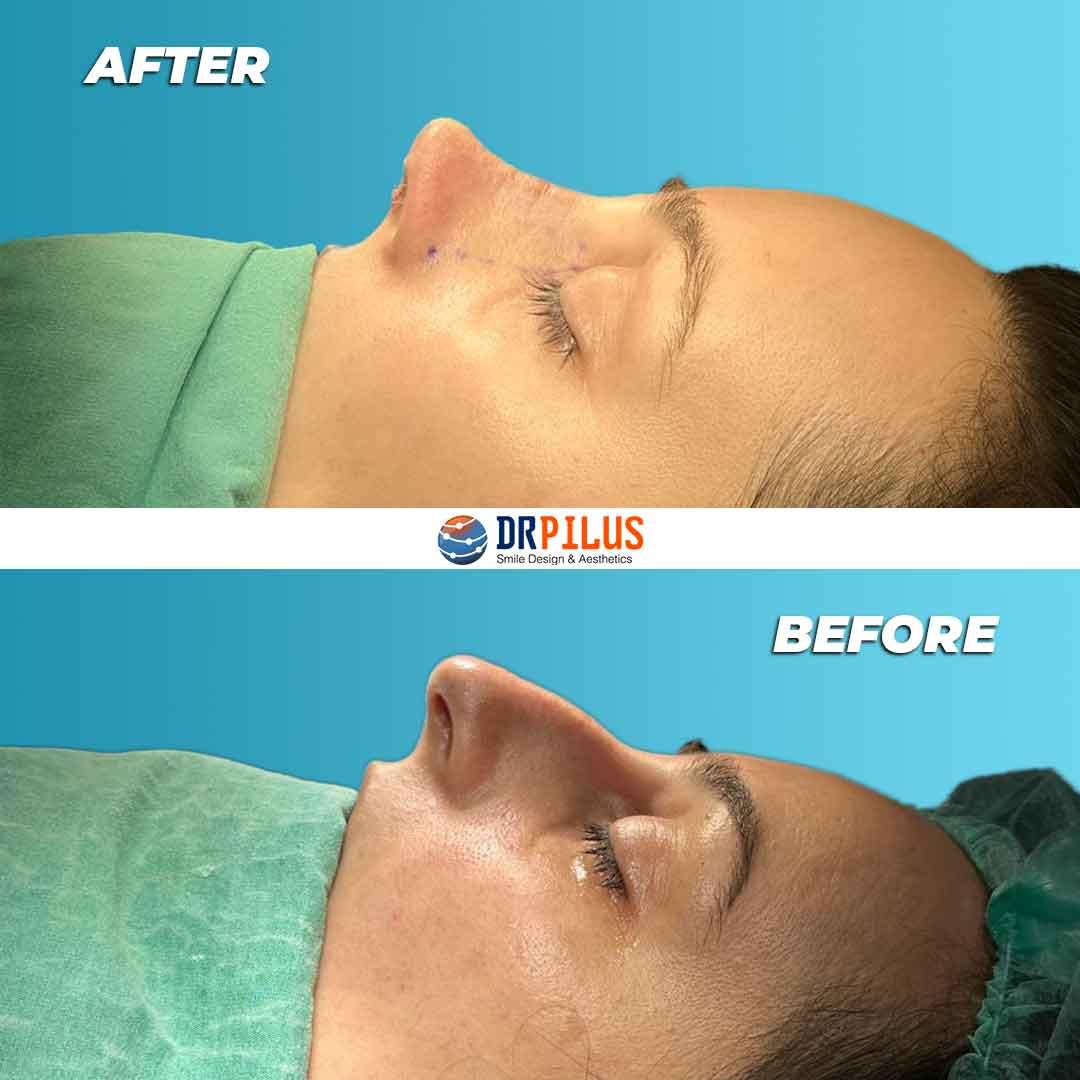
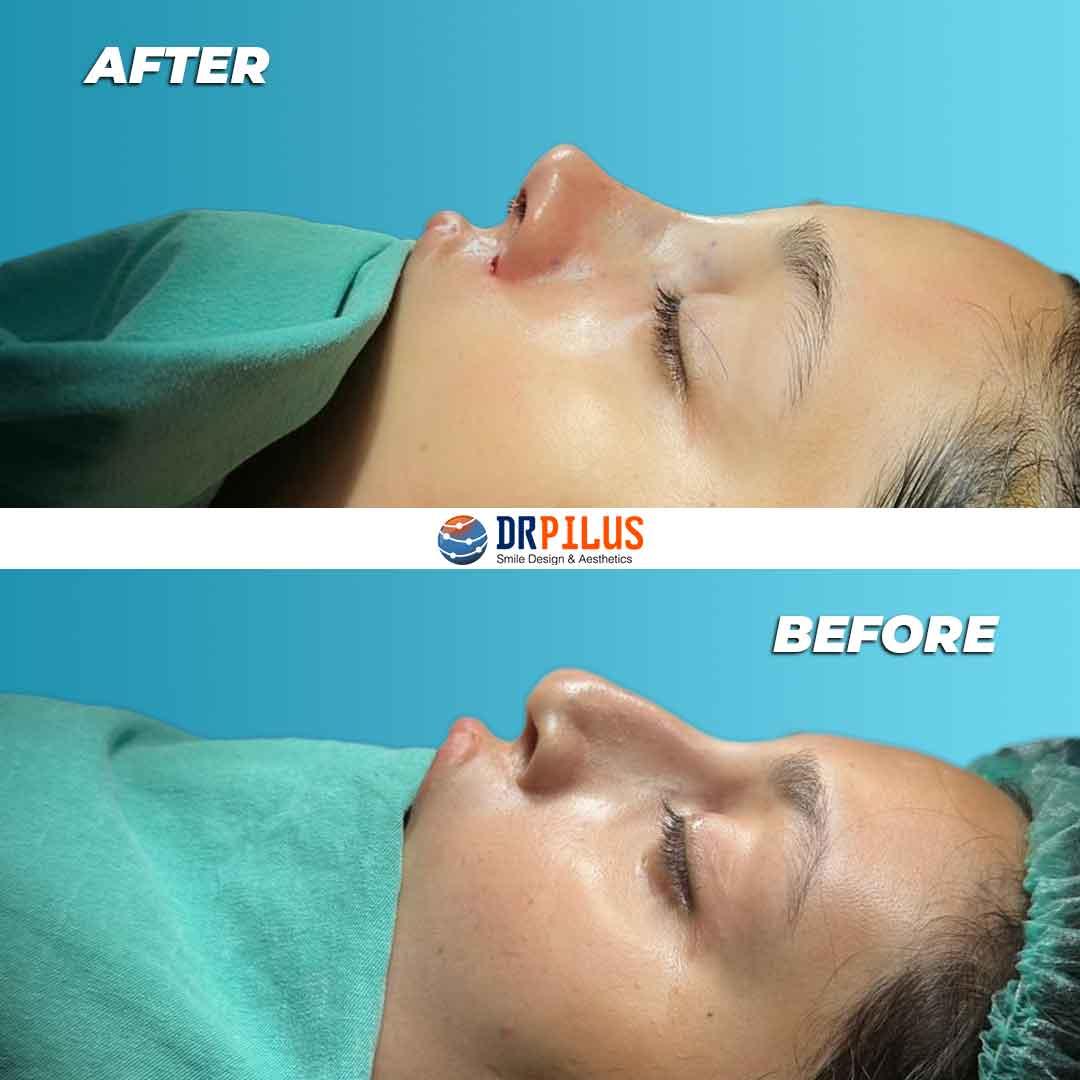
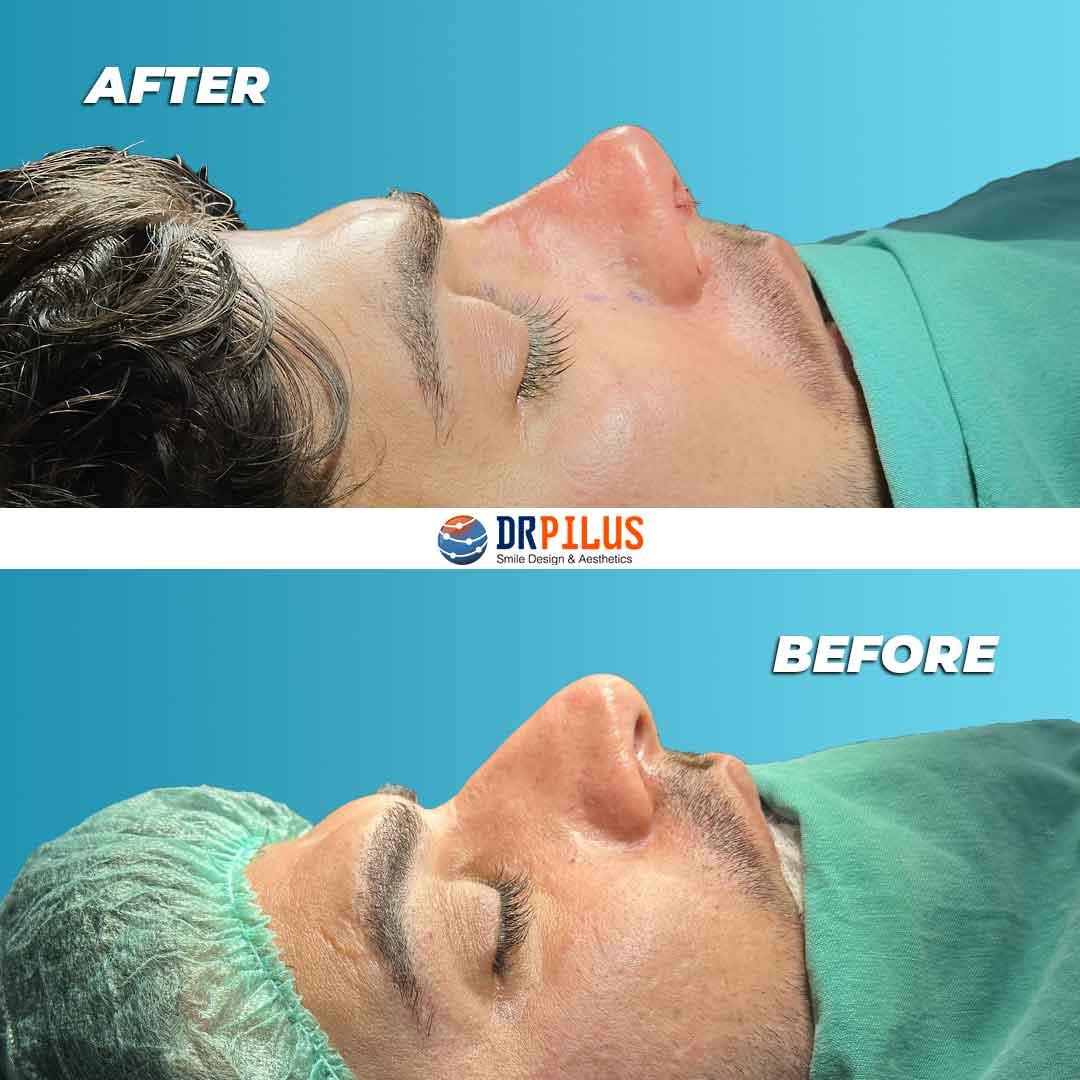
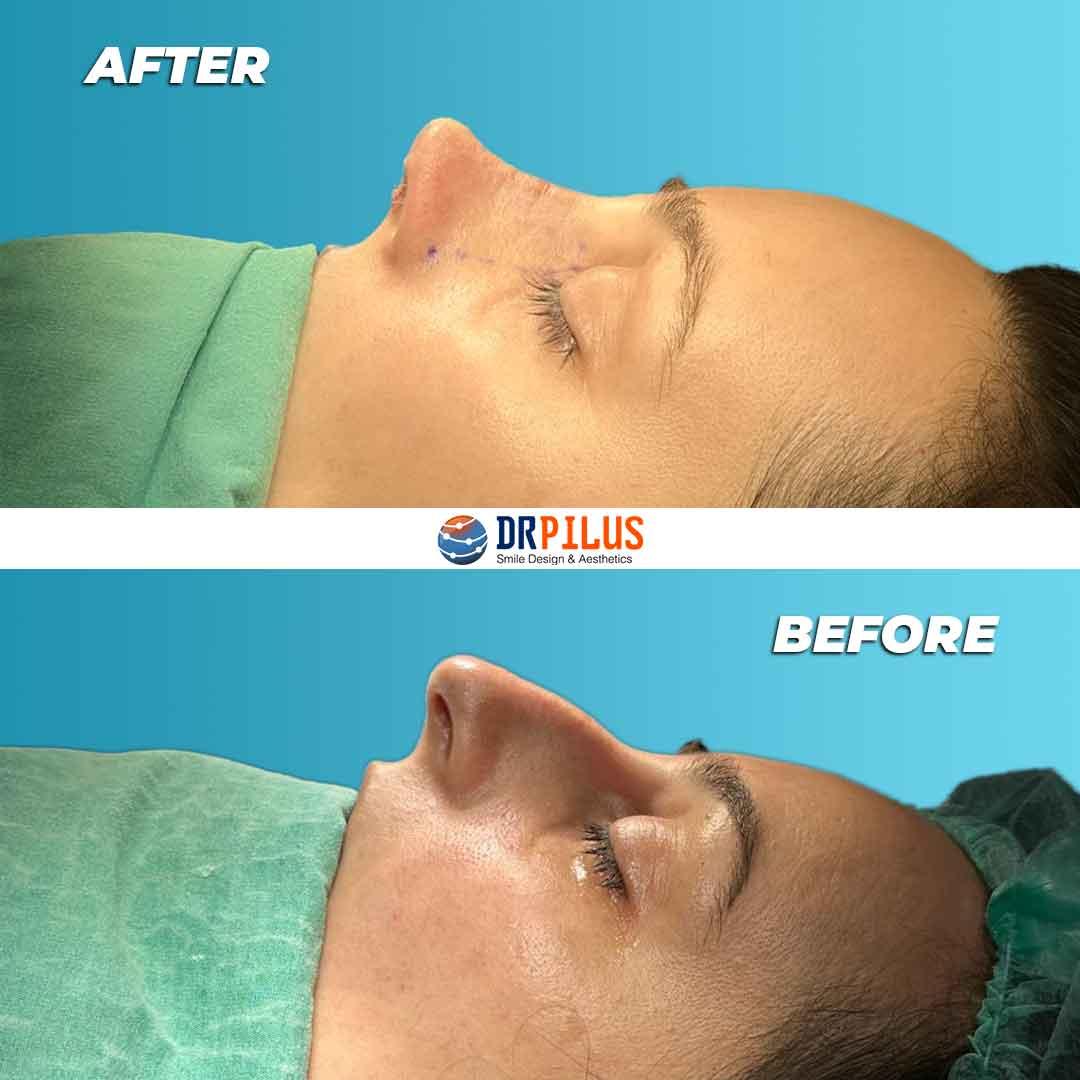
Patient reviews and testimonials
We take pride in the positive feedback we receive from our patients, and we are grateful for their trust in us. We encourage our patients to share their experiences on our website and social media pages, and we are happy to provide references upon request.
At Dr Pilus, we understand that rhinoplasty is a personal decision, and we strive to provide our patients with a comfortable and safe environment to make their experience as smooth as possible. Contact us to schedule a consultation with our team of expert surgeons and learn how we can help you achieve your desired nose shape.
Planning Your Rhinoplasty Trip to Turkey with Dr Pilus
If you're considering a rhinoplasty procedure in Turkey, Dr Pilus should definitely be on your list of potential surgeons. Here's what you need to know about planning your trip:
Pre-operative consultations:
Before you arrive in Turkey, Dr Pilus will likely want to have a virtual consultation with you. This allows you to discuss your goals for the surgery and ask any questions you may have. Dr Pilus may also ask you to send photos of your nose to help with planning the procedure.
Travel and accommodation arrangements:
Once you're ready to book your trip, you'll need to arrange your travel and accommodation. Many patients choose to stay in Istanbul, as it's a convenient location for accessing Dr Pilus's clinic. You may want to consider staying in a hotel or apartment that's close to the clinic to make travel easier.
Post-operative care and follow-up:
After your surgery, you'll need to stay in Turkey for several days to allow for recovery. Dr Pilus team will provide you with detailed instructions for caring for your nose after the surgery. You'll also need to schedule follow-up appointments with Dr Pilus team to ensure that your recovery is progressing as expected.
What to Expect on the Day of Surgery:
On the day of your surgery, you'll arrive at Dr Pilus clinic and meet with the team. They'll walk you through the procedure and answer any last-minute questions you may have. Once you're ready, you'll be taken to the operating room, where you'll be given anesthesia. The surgery typically takes a few hours to complete.
Recovery Period and Aftercare:
After your surgery, you'll need to take some time to recover. Dr Pilus team will provide you with detailed instructions for caring for your nose, including how to clean and change the dressings. You may experience some swelling and bruising, but this typically subsides within a week or two. Dr Pilus team will schedule follow-up appointments with you to monitor your progress and ensure that you're healing properly..
Dr Pilus clinic is well-known for its expertise in rhinoplasty, and the clinic is one of the best in Turkey. With careful planning and attention to aftercare, you can expect excellent results from your surgery with Dr Pilus. Don't hesitate to reach out to the clinic to learn more and start planning your trip.
Rhinoplasty Nose Job Costs in Turkey 2024:
One of the most significant factors that patients consider when choosing to have rhinoplasty is the cost. In Turkey, rhinoplasty is relatively affordable compared to many other countries, including the United States and Europe. The exact cost of a rhinoplasty procedure in Turkey can vary depending on several factors, including the surgeon's experience and reputation, the type of rhinoplasty performed, the clinic's location, and the patient's specific needs.
At Dr. Pilus Rhinoplasty Center, we offer competitive and transparent pricing for our patients. We provide a detailed breakdown of the costs involved during the consultation process, so patients can have a clear idea of what to expect.
Non-Surgical Rhinoplasty in Turkey:
Apart from traditional rhinoplasty, non-surgical rhinoplasty has become an increasingly popular option for those who seek to alter the shape of their nose without going through surgery. This procedure involves the injection of dermal fillers into specific areas of the nose to reshape it.
What is Non-Surgical Rhinoplasty?
Non-surgical rhinoplasty is a minimally invasive procedure that can enhance the appearance of the nose without the need for surgery. This treatment can help improve the shape, size, and contour of the nose, making it look more balanced and symmetrical.
Advantages and Disadvantages of Non-Surgical Rhinoplasty:
One of the significant advantages of non-surgical rhinoplasty is that it is less invasive than traditional rhinoplasty, which means there is less downtime and faster recovery. Additionally, the results of non-surgical rhinoplasty are visible immediately, and the procedure is reversible if the patient is not satisfied with the outcome.
However, it's essential to note that non-surgical rhinoplasty is not a permanent solution and typically lasts between 6 to 18 months. It is also only suitable for certain patients and specific concerns. Patients who require more significant changes to the shape or size of their nose may be better suited to traditional rhinoplasty.
How to Choose the Right Surgeon for Non-Surgical Rhinoplasty:
When selecting a surgeon for non-surgical rhinoplasty, it's crucial to do your research and choose an experienced and reputable surgeon. The surgeon should have a thorough understanding of facial anatomy and the injection techniques involved in non-surgical rhinoplasty.
At Dr. Pilus Rhinoplasty Center, we have a team of experienced and qualified surgeons who are well-versed in both traditional and non-surgical rhinoplasty techniques. We work closely with each patient to develop a personalized treatment plan that addresses their specific concerns and goals.
Overall, choosing to undergo rhinoplasty or non-surgical rhinoplasty is a personal decision that requires careful consideration and research. By choosing a reputable and experienced surgeon like Dr. Pilus, patients can feel confident that they are in safe hands and can achieve their desired results.
Frequently Asked Questions about Rhinoplasty in Turkey 2024
Rhinoplasty is a popular cosmetic surgery in Turkey, attracting patients from all over the world who are looking to enhance the appearance of their nose. As with any surgical procedure, patients often have questions and concerns about the process. Here are some frequently asked questions about rhinoplasty in Turkey:
Is Rhinoplasty Painful?
Rhinoplasty is generally not a painful procedure, as patients will be given anesthesia to numb the area. After the surgery, patients may experience some discomfort and swelling, but this can be managed with pain medication prescribed by the surgeon.
How Long Does Rhinoplasty Take?
The duration of rhinoplasty surgery can vary depending on the complexity of the procedure. On average, it takes around 2-3 hours to complete.
What is the Cost of Rhinoplasty in Turkey?
The cost of rhinoplasty in Turkey can vary depending on several factors, including the experience of the surgeon, the location of the clinic, and the type of procedure performed. At Dr. Pilus, we offer competitive pricing for our high-quality services. Contact us for a detailed quote.
Can I Travel Immediately After Rhinoplasty?
It is recommended that patients stay in Turkey for a few days after the procedure to allow for proper aftercare and follow-up appointments with the surgeon. It is not recommended to travel immediately after the surgery, as it can increase the risk of complications.
Can Rhinoplasty Be Covered by Insurance?
In general, rhinoplasty is considered a cosmetic procedure and is not covered by insurance. However, in some cases, it may be covered if the surgery is deemed medically necessary.
How Long Does the Recovery Period Take?
The recovery period for rhinoplasty can vary from patient to patient, but typically it takes around 1-2 weeks for the initial healing period, and several months for the full recovery. The surgeon will provide detailed instructions for aftercare and recovery, including avoiding strenuous activities and wearing a nasal splint.
Will the Results Look Natural?
At Dr. Pilus, we pride ourselves on creating natural-looking results that enhance the patient's facial features. The surgeon will work closely with the patient to understand their goals and ensure that the results are both aesthetically pleasing and functional.
Is Rhinoplasty a Safe Procedure?
As with any surgical procedure, there are risks associated with rhinoplasty. However, when performed by a qualified and experienced surgeon, the risks are minimized. The surgeon will discuss potential risks and complications with the patient before the procedure.
Can I See the Results Before Surgery?
The surgeon can provide a computer simulation of what the patient's nose may look like after the procedure. This can give the patient an idea of what to expect and help them make an informed decision about the surgery.
When Can I Resume Normal Activities After Rhinoplasty?
Patients should avoid strenuous activities for several weeks after rhinoplasty to allow for proper healing. The surgeon will provide detailed instructions for aftercare and recovery, including when it is safe to resume normal activities.
